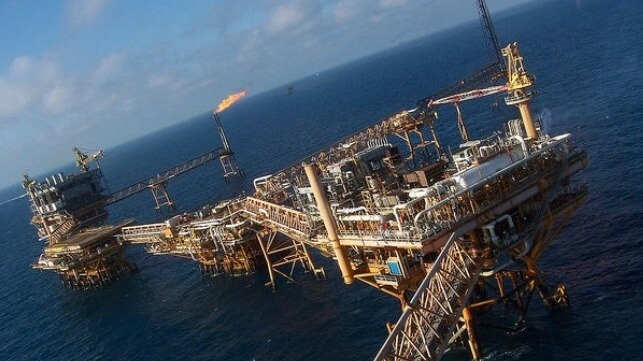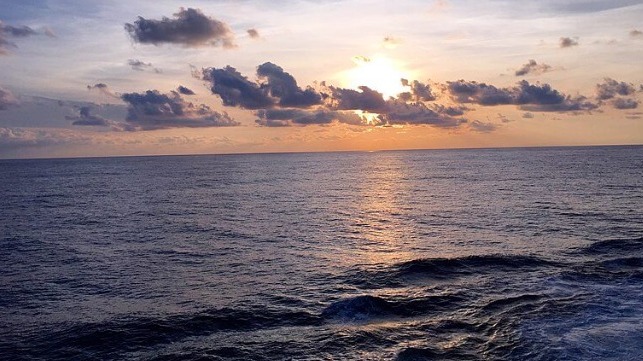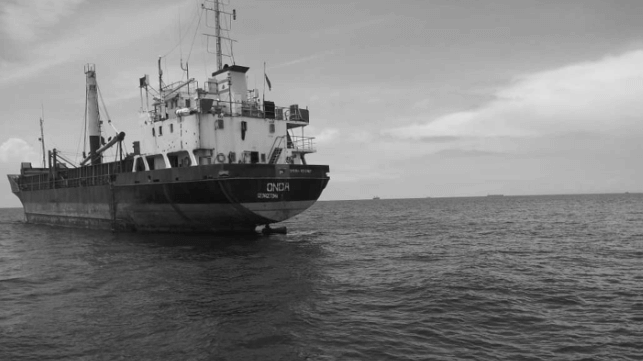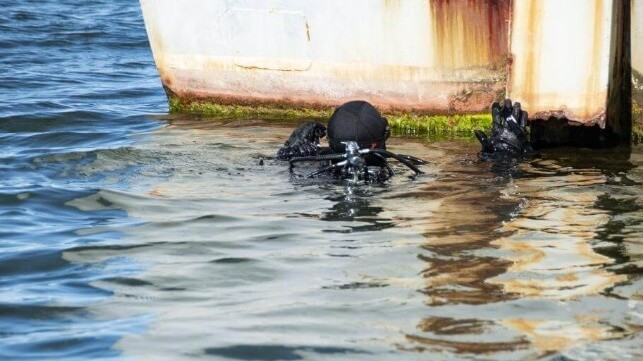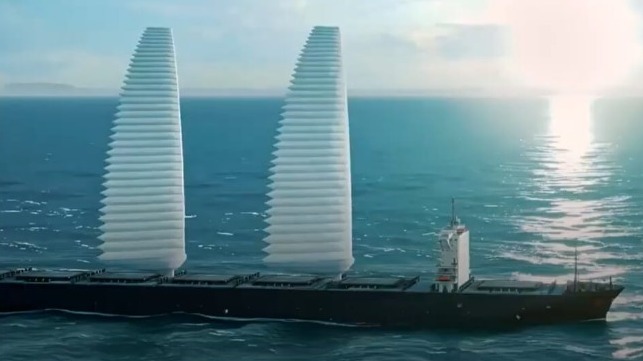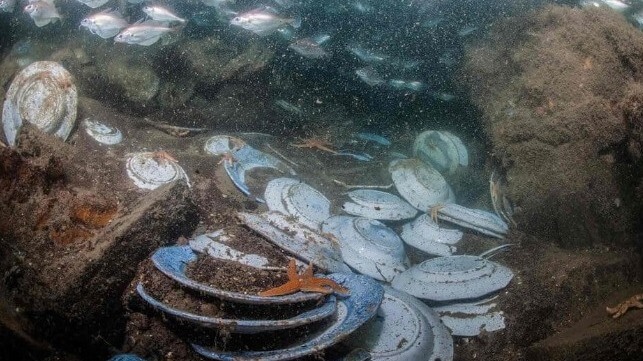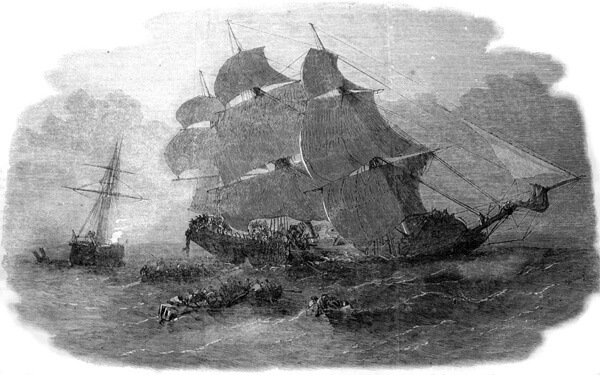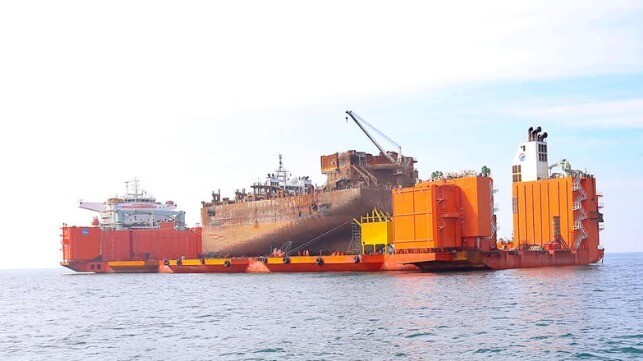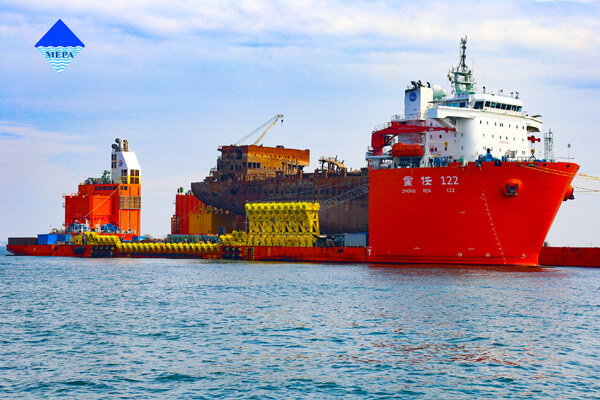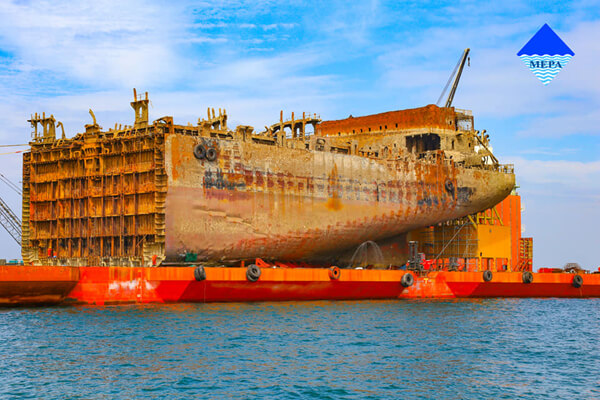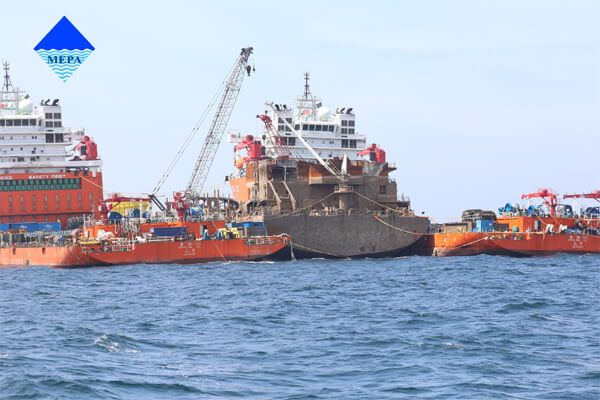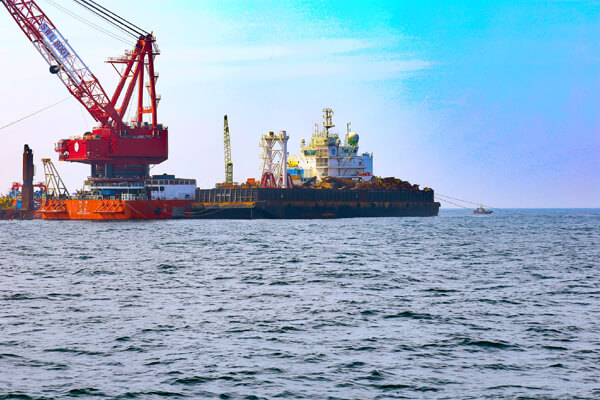China is Putting New Energy and Investment Into Tidal Power
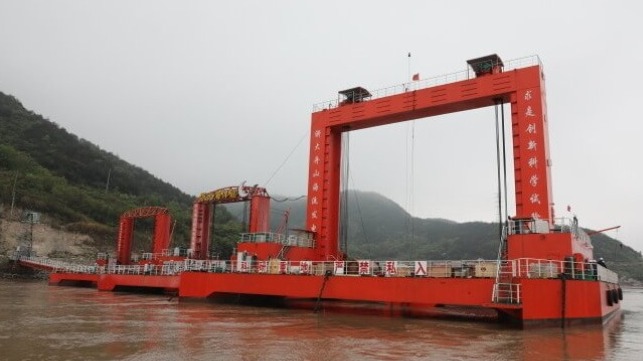
[By Han Qin]
The ebb and flow of the tide powers a turbine while the sun shines on solar panels. In May 2022, China’s first combined tidal and solar power station started feeding electricity to the grid, and the media waxed lyrical: “The sun and moon work together to generate power both above and below the waves.” This is a new model for power generation in China and marks an important step forward for integrated ocean energy. It is expected the electricity generated will power 30,000 homes.
With the need to achieve a global energy transition ever more pressing, the ocean and its vast and widespread energy are getting more attention.
The EU, US, Australia and China have all put policy frameworks in place to promote development of ocean energy. The EU has moved fastest. In terms of generating capacity, the bloc accounted for two-thirds of new tidal installations worldwide in 2021, and half of all wave energy.
According to estimates from the International Renewable Energy Agency (IRENA), generation capacity from ocean energy installations could reach 3 gigawatts (GW) in the next five years, then 70 GW in 2030 and 350 GW in 2050 – the equivalent of over 100 Three Gorges Dams.
That might seem a drop in the ocean given China’s total installed power generation capacity of 2,000 GW. But ocean energy is being seen as key for energy security, relieving coastal and island energy shortages, and boosting international competitiveness in marine tech. China has, therefore, put top-level plans in place to encourage research and utilisation in the field. According to a 2019 report from the Ministry of Natural Resources’ National Ocean Technology Centre, by the end of 2018 China had 7.4 MW of ocean-based generating capacity, which had produced a total of 234 GW hours of electricity since being installed.
There are ocean energy installations scattered along China’s coast. But the overall amount of energy available for exploitation is low. Below we will explore in detail the development of the five types of ocean energy and their future prospects in China. In short, tidal barrages are already in commercial use, while tidal stream generation, after almost ten years of development, is in the early stages of commercialisation. Wave power installations are undergoing sea trials. China’s technology in these fields is among the best in the world. In March, the country’s first megawatt-scale tidal stream station was hooked up to the grid in Zhejiang and is expected to generate at least 1 GWh a year. Meanwhile, ocean thermal energy is undergoing scale-model tests and salinity gradient energy is being tested in laboratories.
However, Wu Lixin, head of Qingdao National Laboratory for Marine Science and Technology, and vice president of the Ocean University of China, says China still lacks strategic plans and policy support for ocean energy, while construction and generation costs remain high. To accelerate growth, he calls for mid- and long-term development plans, regulation and funding.
Tidal barrages
Tidal barrages work much like hydropower dams. A dam-like structure is used to retain tidal waters and the differences in water level are then used to drive turbines. This is currently the most commercially viable form of ocean energy and has been in use for decades. France’s Rance Tidal Power Station, an early tidal barrage, has been in operation since 1966.
In China, tidal barrages can be traced back to the 1950s. Over the past seven decades, China has built over 100 small-scale tidal barrages, but due to technical problems, planning issues and operational factors only two are still running, in Jiangxia and Haixia, both in Zhejiang province. The Jiangxia Experimental Tidal Power Station has been expanded and upgraded several times and is now the world’s fourth largest, with a 4.1 MW capacity.
Unfortunately, China’s coasts tend to see only small differences in water levels between high and low tide, which reduces efficiency. Between 2009 and 2015, China carried out initial feasibility studies at a number of locations suitable for tidal barrages between 10 and 99 MWs. It found the “factory gate” cost of electricity would be between 1.386 yuan and 2.6 yuan per kilowatt hour. This was similar to costs seen internationally, but higher than hydropower or solar. In 2021, wind and solar power in China was generating electricity for no more than 0.50 yuan per kilowatt hour.
However, new tech could make up for the limitations of tidal barrages. Combined tidal and solar generation can’t reduce costs yet but can increase stability of supply. Meanwhile, researchers in the UK, Holland and Australia are working on “open barrages” which will not block waterways and so would have less environmental impact.
In May 2022, China’s first combined tidal and solar power station started feeding electricity to the grid, in Wenling, Zhejiang province (Image: Alamy)
Tidal streams
Unlike tidal barrages, tidal stream generation relies not on differences in water levels between high and low tide, but on tidal water flowing in and out. They work in a similar way to wind turbines, converting flow into electricity.
In 2003, the world’s first tidal stream installation, a 300-kilowatt turbine, was placed in the waters off Lynmouth in the UK. The technology has been improving ever since. In 2015, the UK, Switzerland and other partners started work on the world’s largest tidal stream power station, Meygen, in Scotland’s Pentland Firth. A year later, it had a generating capacity of 6 MW. Eventually it is slated to have a capacity of 398 MW, almost 100 times the output of China’s Jiangxia site. That success spurred the tidal stream market and shifted the technology from pilot projects to commercial operation.
Globally, tidal stream is now the focus for commercial ocean energy generation. A report from the European Commission’s Joint Research Centre listed ten emerging ocean energy technologies. Of those, four were tidal stream technologies and three are relevant to the field of ocean power generation.
China has been researching tidal stream generation since the 1980s and is one of the few countries to have mastered its use at scale. One project near Xishan Island, Zhoushan, Zhejiang has been creating electricity since 2016. In March 2022, a 1.03 MW turbine was added – reportedly the world’s largest individual tidal stream unit.
As of 2021, China ranked second globally for installed tidal stream generation, behind the UK. The prospects for commercial operation see bright.
The country does have plenty of resources to exploit. According to 1988 mapping, China had 13.95 GW of tidal energy generation potential in its waters. But that estimate would have been limited by the technology and survey techniques of the time, and the real number is likely to be larger. The province of Zhejiang is particularly rich in tidal stream potential, with 40% of the national total. In particular, Hangzhou Bay and the islands of the Zhoushan archipelago are world-class sites and it is fair to say China has a natural advantage here.
Wave power
The wind makes the waves, and their energy can be harnessed to drive generators. But capturing energy from waves is less efficient and less stable than doing so from tides.
Significant investment by countries including the UK, US, Australia and China has led to rapid development, but many different methods are used and the technology is mostly still in the demonstration stage. There is still some way to go before sea trials and commercial application.
Some technologies have progressed more rapidly through the research and development, sea trials and commercialisation stages. In the US, Ocean Power Technologies’ PowerBuoy uses a direct drive generator; while Denmark has the Wave Dragon overtopping device. These have all undergone extensive sea trials and are being hooked up to the grid.
Because China has a long coast, it has a lot of wave power resources to exploit. Geographical factors and monsoons make Zhejiang, Guangdong and Fujian particularly suitable. But wave intensity – wave power by area – is relatively low. Even China’s most wave-intense sites are only a tenth as powerful as the global average. That makes it hard to scale up devices and bring costs down.
Wu Bijun, an ocean energy researcher at the Guangzhou Institute of Energy Conversion, has said in a media interview that there are also challenges associated with protecting installations from typhoons as well as increasing efficiency.
Wu and his research team have focused on oscillating water column systems, which are relatively simple, safe, reliable and efficient. One such device developed in Scotland features a partly-submerged concrete structure that’s open at the bottom. As the sea oscillates up and down, it forces air through a turbine.
In 2019, tests by the National Ocean Technology Centre saw conversion efficiency of 50.73%. Such devices could be used to power marine instrumentation, marine ranches or islands.
Thermal and salinity gradients
The possibility of generating power from thermal and salinity gradients is also being investigated, but commercial use remains a way off.
Ocean thermal energy conversion (OTEC) harnesses the temperature difference between the sun-warmed surface and colder deeper waters. This technique was initially proposed in the 19th century, while the first OTEC installation was built early in the 20th century, in Cuba. The 21st century has seen renewed interest in OTEC systems, thanks to improvements in heat circulation technology and on-land thermal gradient systems.
This form of ocean energy has more potential in Chinese waters than any other. According to calculations by Wang Chuankun, a researcher at the State Oceanic Administration’s Second Institute of Oceanology, and others, developing 1% of the potential (about 360 GW) would generate more power than all of China’s PV solar installations. But China only started research in this field in the 1980s and systems are still undergoing sea trials.
Salinity gradient systems, meanwhile, are even more recent and high cost. This technology remains in the proof of concept and lab test stage. Salinity gradients are found between seawater and freshwater, or two bodies of seawater with different levels of salt. This most commonly means where rivers flow into the sea.
In 2009, Norway’s Statkraft built a 10-kilowatt demonstration system. Seawater and freshwater are filtered and placed on either side of a membrane, creating an osmotic gradient. Water molecules from the freshwater side cross the membrane, creating pressure which can be used to drive turbines.
Interest in this technology is increasing around the world, particularly for the manufacturing of hydrogen from seawater and in deep-water aquaculture. Liu Weimin, a researcher at the First Institute of Oceanology who studies ocean renewables, has written that thermal gradient technology is suitable for remote islands in tropical waters, both in terms of potential resources and feasibility. The power generation could be combined with sea water air conditioning and desalination, he added.
Conclusions
China has funded over 100 ocean energy research projects since the 1980s. Currently, hundreds of researchers are working on these issues, with notable results. Costs remain the main obstacle, but as development of the coasts, islands and ocean continues, we will better know where to place such projects.
According to Li Wei, chief ocean energy researcher at Zhejiang University’s Ocean Academy, ocean energy can be located close to island power users. As the diesel-fuelled power generation currently used on islands can cost between 2 and 6 yuan per kilowatt hour, ocean energy is already a viable alternative. Also, offshore and underwater facilities have a pressing need for ocean-generated energy.
As Li Wei says, ocean energy is a triple-win for China’s strategic goals on carbon neutrality, renewable energy and high-end manufacturing. “We’ve got a good research foundation and conditions for commercialisation, representing a major opportunity.”
Han Qing is a former environmental journalist for Jiemian and Beijing News, with a focus on climate and biodiversity.
This article appears courtesy of China Dialogue Ocean and may be found in its original form here.
The opinions expressed herein are the author's and not necessarily those of The Maritime Executive.
